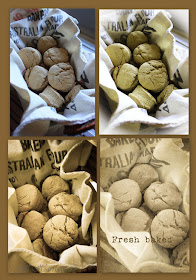with apologies to
Shakespeare - To Lug or not to Lug? That is the Question.
While on holiday we always find ourselves climbing through gorges, walking along a
trail to a sight that shouldn’t be missed, or exploring new towns and cities on
foot. And as a photographer the question always arises, to lug or not to lug
camera equipment? Do I lug a backpack
with cameras, lenses, filters, paraphernalia, tripod (all this surely yells
“photographer” to any would-be thief!), with one camera easily accessible in a waist pack to
grab photographic opportunities whilst I juggle walking poles – the poles help me with balancing all that weight in the camera bag on my back and I need the extra support on bush tracks ……. And if we are hiking and camping overnight, well there is camping gear as well......
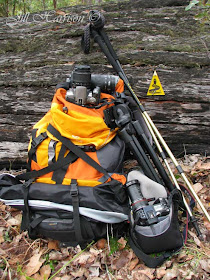
In the pursuit of “that photo” I have lugged a camera
backpack through the amazing domes of Purnululu, up and down rocky ledges in magnificent gorges
along the Gibb River Road, Karijini and central Australia, up mountains, around
lakes, along beaches, rivers and forest trails, tramped around the base of Uluru,
climbed to lookouts along spectacular coastline, and most insanely walked for
two hours in 38 plus degree heat in the Keep National Park in the Northern
Territory – we wouldn’t normally hike in 38 degree heat but we were on holiday!
Make sure you definitely lug water and wear a hat for that one!
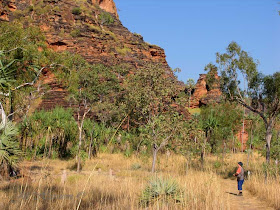 |
| Keep National Park, Northern Territory, Australia |
Last summer we travelled to Denmark, Walpole and Shannon in
the spectacular Walpole Wilderness area of Western Australia’s south
coast. And true to photographic
endeavour I packed two cameras, 3 lenses, two tripods, paraphernalia, and a
laptop to download photos. Normally my camera bag sits at my feet on the floor
of the front seat along with a bag of maps, travel brochures and a notebook,
with one camera on top to grab quickly.
It is a little crowded around my feet with all that stuff! However this time it was a little different. The camera bag was relegated to the floor behind
my seat, and I kept at hand my previous year’s acquisition, my Canon G11 – a light,
compact, handy little camera with many great SLR features, swivel screen, macro,
and 5xzoom.
So when my husband pulled over to the side of the road so I
could take yet another wildflower or scenic photo, or we strolled along magnificent coastlines,
tramped through towering Karri forests, and photographed pelicans waiting for a
feed from local fishermen on the beach, my hefty camera bag was left laying on
the floor of the backseat, and my compact was given preference.
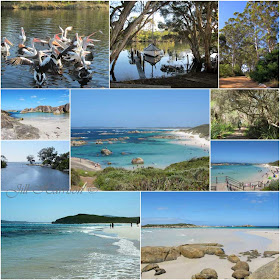 |
| Denmark, Western Australia |
Whether you carry a backpack full of gear or one camera really
depends on what you want to photograph and why you are taking photos. If you are hiking a distance a small compact
camera may be ideal, however if your primary motive is to take photos then a DSLR
and accessories, including tripod would be preferable. It important to decide what
your prime goal is, as whatever you choose to aid one goal may be at a
sacrifice to the other.
When I am travelling and using my DSLR, I always seem to be
changing lenses – it doesn’t matter what lens I put on I always seem to have to change it depending on varying photographic opportunities – while my poor companions
wait patiently under the shade of a tree or walk on to leave me taking off my
backpack yet again and juggling with lenses (hopeless if you are with a tour
group!)
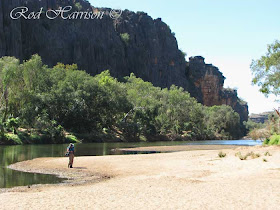 |
| Me and my camera - photo taken by my husband while waiting! |
I have started carrying my G11 with me everywhere, but I think
I have now come to a place where I want to capture images as they present
themselves, those moments in time, without planning ahead and worrying about
the setting up. I am questioning “why do I take photos” and I want to return to
just enjoying photography, not with the thought of a possible monetary reason. However, as a freelance travel writer, a
camera is essential for you never know when your next story will jump into view.
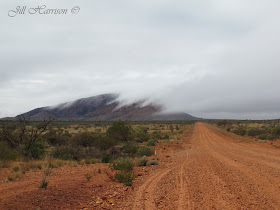 |
| Great Central Road, Western Australia |
|
So did I get the shots I wanted on my trip to the south
coast? I took a whole range of photos with my compact from flowers to
landscapes. As with all trips, some of
the photos stood out, and some did not, but they did include saleable shots to
go with several travel articles. Undoubtedly I could have done better if I had
taken more time and used my DSLR, but I don’t always have the luxury of time.
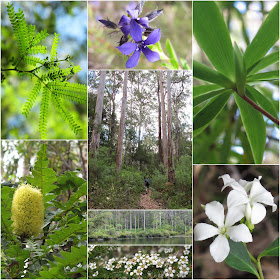 |
| Shannon National Park, Western Australia |
On our next trip I again lugged my backpack of camera
gear – you never know when that award winning photograph will present itself,
and you want to be prepared.
So the question is - does it really matter what sort of camera you have? I
guess it all depends on what your end goal is – for yourself, for your blog,
for magazines, or for printing on a huge scale for sale.
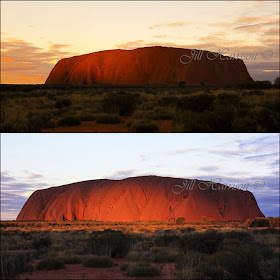 |
| Uluru - Can you tell which is the DSLR photo and which was taken with my compact G11? |
In todays’ world of "instagram" phone photography and social media
thousands of photos are downloaded every day to photo sharing sites. To get a winning shot maybe it really just comes down to being in
the right place at the right time with a camera - any camera - and a photographic eye. After all, the camera may be the mechanism to
record the scene but it is the photographer that captures the image!
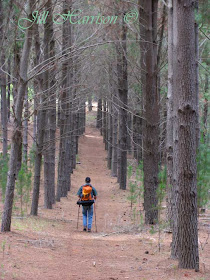 |
| Bibbulmun Track near Balingup, Western Australia |
I hope you have enjoyed reading my ramblings. Have you had this delema? I am interested to hear your thoughts.
Did you pick which photo of Uluru was taken with the DSLR?
I am linking up to Travel Photo Thursday. Please click on the link to see photographic travels around the world - Travel Photo Thursday
































